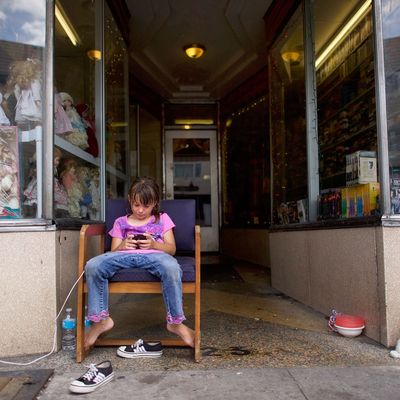
A report released Tuesday by the Broadband Commission for Sustainable Development described access to internet as essential for life as clean drinking water and electricity. If that’s the case, rural America is dangerously dry and dark. While broadband access continues to expand for all Americans, rural areas have lagged behind urban and suburban areas. According to the Federal Communications Committee’s own findings, over half of all rural Americans still lack access to high-speed broadband. A recent Pew Research Center Poll found that nearly one-quarter of all rural Americans reported major problems accessing high-speed internet. With the internet quickly transitioning from a luxury to a necessity for daily life, some fear this divide in internet access could further entrench already present societal divides if left unaddressed. Worse, recent attempts by the FCC to roll back elements of its Lifeline subsidy program may exacerbate this internet inequality even further.
Originally implemented during the Reagan years, Lifeline was a federal program meant to subsidize landline phone services for the poor. With the rise of the internet as a major means of communication, Lifeline expanded to include subsidies for online access as well. That access was bolstered even further in 2016, when the FCC voted on partisan lines to expand Lifeline to include high-speed broadband access. Low-income Americans at or below the 135 percent poverty line receive a $9.25 monthly subsidy. While poverty transcends geography, data shows that nonmetro rural areas on average tend to be poorer. Despite this, support for Lifeline has hit an all-time low under Chairman Ajit Pai.
Last year, Pai set in motion measures to target the 2016 Lifeline measures, citing what he viewed was an “overreach of authority” by the Obama-era FCC. Since then, Pai has derided the estimated subsidies, estimated to cost over $2 billion annually, as crippled by “waste, fraud and abuse.” (A Government Accountability Office investigation found that over $1.2 million in Lifeline subsidies was spent on dead and nonexistent people.)
Even with those figures in mind, Pai’s attempts to weaken Lifeline have been met with mass criticism in the media and among rural communities. Limiting Lifeline in practice has also met opposition. Last month, a federal appeals court blocked the FCC’s plan to cut Lifeline subsidies to rural tribal lands. Ironically, Pai himself hails from a rural community impacted by a lack of broadband access. Born in Parsons, Kansas, Pai has, at least publicly, made the expansion of broadband access to rural areas one of his top priorities. The long-term effect of Pai’s proposed broadband expansion remains to be seen, but cuts to Lifeline could stymie any potential gains.
Rollbacks to Lifeline are just part of the problem for rural areas. As the Pew study notes, rural areas are less likely to be wired for broadband in the first place. Rural areas with broadband tend to have fewer providers as well, which leads to less competition and slower speeds.






























